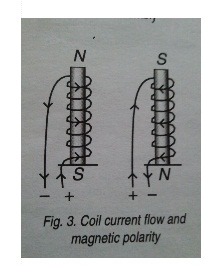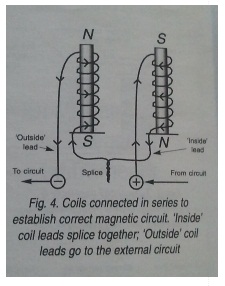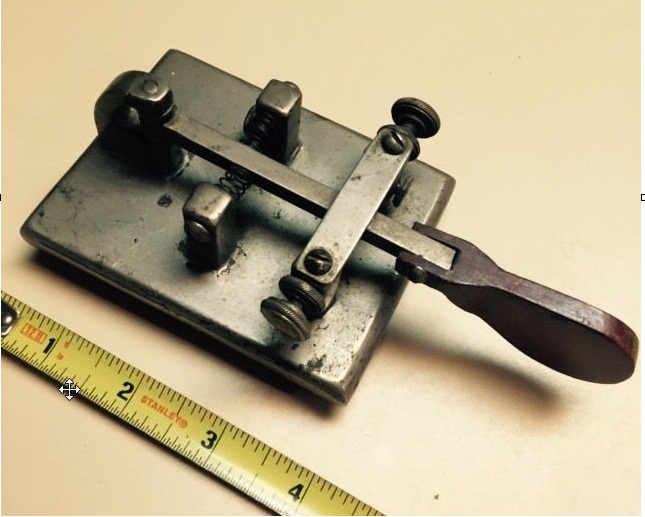
PA3CLQ's Leuke Linken Nr. 428
Learning to send with a single lever paddle.
Hi Everyone,
I've set myself the task of learning to send with a single lever paddle.
This is more of a challenge to myself than anything else--simply "Can I do it?"
Right now my main key is a sideswiper.
So, before getting too far into it, would some of you multi-instrumenalists send me down the right path?
Tnx es 73, John Flynn K4ARQ
REM :
John,
The sideswiper is my absolute favorite key.
Here's a link to a video that helped me pick it up quickly...
An introduction to the Sideswiper....
https://us.search.yahoo.com/yhs/search?hspart=iry&hsimp=yhs-fullyhosted_003&type=wncy_ir_16_12¶m1=1&
Yes,
you can do it.
Just stick with it.
If you need further encouragement please email me.
www.edliko.net
73,
Ed - ad7gr
REM :
Oops! I left out an important piece of info.
I should have said "a single lever paddle and keyer."
I hope that clarifies the request.
John K4ARQ
REM :
I'm confused about what you're trying to do.
Are you talking about learning to use a single lever paddle with an electronic keyer?
I use a Kent single lever paddle (like it alot) with the internal keyer in my K2 on occasion.
You use a single lever paddle the same way MOST people use an "iambic" paddle (no prissy little squeezes).
In
about 10 minutes, it will feel like any other paddle for an electronic keyer
only better.
The only other use I can see for a single lever paddle is to jumper the dit to
dah contacts together and use it as a sideswiper or cootie where you form the
dots/dashes yourself.
But
you seem to already be using a sideswiper.
So what is it you're trying to learn?
Eric KE6US
REM :
Ha ha. OK, John.
That's better.
As I said, you use a single lever paddle the same way most people use an "iambic" paddle.
But
if you have never used an electronic keyer, that's not real helpful. hi.
If you've ever used a bug, then you already have at least half the skill (the
dit side).
Like you were told when you first learned code, don't count the dits.
Listen to the sound one, or two or three or more make.
Learn
that.
Let your hand rotate (flop) from side to side sort of the way you do with a
cootie, but you don't need to be as aggressive with an electronic keyer since
you don't have to impart any energy to the key like with a bug or cootie.
I close the contacts all the way down, then open them until they break contact.
I
keep the spring tension MUCH lighter too, than I do with my bugs and
sideswipers.
The convention with an electronic keyer is to generate dits with your thumb and
dahs with your forefinger just like a bug, but I find lots of hams who do it
the other way around for some reason.
It
doesn't really matter except it freaks out visiting hams when they want to try
your key.
Like everything else in CW: practice, practice, practice.
I
suspect you will adapt much faster than you are imagining right now.
Eric KE6US
REM :
John,I assumed, since you're posting to this group, that you are using the "single lever paddle" as a sideswiper.
Now
I am confused as to what sort of advice you are looking for.
My key is a Begali HST III set with it's switch in sideswiper mode.
Straight
key only... no keyer used.
www.edliko.net
73,
Ed - ad7gr
John, If you learned to send good Morse with a sideswiper, you have to unlearn
that method and just try using the paddle, off air, until you get it.
73, John...K8JD
REM :
I disagree with John.
After having used a straight key for only a couple of contacts, I made the switch to the sideswiper.
Then after a two years I added a paddle with keyer and got working with it in a few days.
There is no need to unlearn sideswiper technique (fortunately!!), it's just another skill.
Some people prefer to learn sideswiper with one hand and electronic sending with the other.
This is a matter of personal preferences.
I only send with right hand, but can switch from sideswiper to electronic keying and back in a few seconds.
It's just a different mental mode.
But it might not be that easy for everyone.
Maybe I am just lucky.
And then: sideswiping is so much fun that it is not worth to have to unlearn it before using a paddle
73, Alex - PA1FOX
REM :
Hi John,
You first step is to read Iambic Keying - Debunking the Myth by Marshall G. Emm N1FN available here:
http://www.morsex.com/pubs/iambicmyth.pdf
I too fell into the "trap" of iambic squeeze keying which I could never really accomplish.
Fortunately, my mentor for my Level II class at the CWOPs CW Academy encouraged me to abandon squeeze keying in favor of a single level paddle.
Of course I had to "unlearn" the former method of squeeze keying which only applies to the following letters C,F,K,L,Y,Q and R. These will need a bit of practice to get right with a single lever paddle.
The rest will come naturally.
Practice sending The quick brown fox jumped over the lazy dogs back at at least 10 times every day until you can send it without error.
If you make an error start again from the beginning.
It took me about 6 weeks of daily practice to get it right.
I still drop an occasional dit especially on the letter S and B and when I am nervous, but I have made great progress.
Good luck!
Treasurer, Quarter Century Wireless Association, Inc.
73, Charles R. Tropp N2SO
REM :
One of the most important part to remember, John, is, most keyers are self completing.
Start
a dit or a dah, it will finish itself.
A bug or a straight key does not complete the element if you release it early.
Start out practicing with the letters E, I, S, H and 5.
You will get the feeling of listening to your fingers, er, sending.
It is done with your ears!
The on to T, M, O and Zeros.
I've been using keyers since 1959.
Big
challenge when I went back to bugs again was to remember they were not self
completing.
But, as with any key, it is your ears you send with.
Good
luck and practice.
Joe, V31JP
REM :
I feel a need to share a bit of experience here.
I have been a CW hound for years, and have been able to deliver a fair QSO with a straight key, a set if iambic paddles, or a single lever paddle.
About 5 weeks ago, I purchased the Begali CW Machine.
I have also bought their blade, traveller light, and the HST keys.
The CW Machine is very helpful, when in training mode, to both help you clean up your CW sending and copying.
The character spacing and word spacing become apparent to the user, along with the actual forming of the characters.
There is much more that the machine will do, but helping learn, clean up and speed up your CW is one of the many things that it does well.
I'm not affiliated with Begali, other than being a happy customer.
73, Steve KI4EZL
REM :
I use a single paddle key - the secrets to learning (similar to a bug) is hand position.
Hold your hand so that your fingers and thumb form a backward letter c.
Have
the key away from the edge of the desk at least 6 to 8 inches.
Place your hand so that your little finger and wrist are resting on the desk
with the lever between the thumb and index and middle fingers.
You probably have to rotate the wrist slightly down.
Gently close thumb and fingers until they lightly touch the knob (or lever handle).
With very gentle squeeze and rolling motion of the wrist move the lever, thumb for dits and fingers for dah.
Set your keyer for around 20 WPM (I find it harder to send slower than that with a bug or paddle).
For practice use the morse code course at Morse Code Trainer at:
http://morsecode.scphillips.com/trainer.html
It has some character combinations that are both common and a little tricky to do with paddles.
As with most things CW - practice, practice, practice -
best of luck 73 de Tom
A friend is repairing an ancient KOB, to get it working.
The wiring is all apart, and was messed up by
some previous owner.
Each of the sounder coils' two wires are loose.
We are hoping the wires are still intact and the coils still have continuity.
Question: When reconnecting the coils, it seems to me that the top of one coil
should show a north pole when energized, and the top of the other coil should
show a south pole, in order that the magnetic lines of force will tend to follow
a unidirectional path through one coil core, the top movable bar, through the
other coil core, and then back through the bottom connecting bar, all in the
same direction.
Having the tops of both coil cores as north poles, for instance, would cause
them to buck each other.
Is this correct?
Thanks, Steve Bartlett
REM :
Steve….
You are absolutely correct.
Both coils should have been originally wound in the SAME direction….Doesn’t matter which, as long as they are the same.
If the coil windings are electrically complete, and you have the pigtail leads that come out nearest the magnet cores, you are in luck.
If they are broken off, the coils will have to be dismounted from the heel piece, and completely unwound and rewound.
If the pigtail leads are broken off the outside of the windings, usually a turn or two can be unwound from the outside of the windings without affecting the coil resistance enough to bother anything.
This should give you enough lead to extend to the instrument binding post terminals.
Then, to get the magnet polarity right for the magnetic circuit around thru the magnet spool cores, the heel piece and the movable armature, the “inside” leads (the ones that are nearest the core) from each magnet coil are connected together, and the “outside” leads (the last turn on the windings) go the instrument circuit connecting binding posts.
Good luck with your project.
Lake Trump
REM :
Ed,
Thank you for the confirmation.
FWIW, I also had in mind using a compass to verify the magnetic polarities when
connecting the two windings.
Steve Bartlett
REM :
All Points Bulletin! Flash!
Be on the lookout for this issue of the now defunct "Morsum Magnificat"Magazine volume number 46 June 1996.
BE ON THE LOOKOUT FOR THIS ISSUE OF THE NOW DEFUNCT
It contains valuable information of telegraph instrument coil rewinding.
We need an issue to scan as it has exellent illustrations on this subject matter
I wrote the original article and furnished the drawings and so have the copyright to it.
We want to archive this material and make it available for others' use.
73, Ed Trump
REM :
This is the article you are looking for ??
http://www.floridamorse.com/gpage1.html
Garry WW9GT
REM :
Garry…
Yup!…
That’s the ONE!
Lake Trump



I've never seen a side swiper
like this one.
Does anyone know who made it?
It looks like it was made by a company rather
than by a person.
But if a person made it, they did a very good job.
73, David N1EA

Qtc Tous;
Depuis quelques jours j'étais très intrigué par des pertes de correspondants CW aussi brusques qu'inexpliquées, également des Qsb très profonds et si lents que cela ressemblait aussi à une perte de correspondant mais en restant sur la Qrg on notait que le correspondant était toujours là !!
Le phénomène se notait toutes directions !!
Je pense qu'une partie
d'explication peut se trouver dans le lien ci-dessous mais il y aura bien une
explication scientifique très bientôt de la part de la NASA, NOAA
ou VOACAP ou Skyweather.
http://www.7sur7.be/7s7/fr/1506/Sciences/article/detail/2719131/2016/05/30/Un-trou-geant-sur-la-surface-du-Soleil-intrigue-les-scientifiques.dhtml
Je n'ai rien trouvé de transcendant sur Spaceweather mais sur un autre site nous avons une explication plausible et l'évènement est donc à suivre puisque les effets sont attendus vers le 6 juin....! c'est ici :
http://sdo.gsfc.nasa.gov/gallery/potw/item/715
Les Dxmen sont concernés, déjà aujourd'hui le QRN était assez élevé, on notait du QSB profond aussi.
Je viens d'apprendre que MARS en orbite est au plus près de notre TERRE ce 30 mai 2016 et ce depuis 11 ans.
Y aurait -il relation QRN et QSB ??
73s 5T0JLJean J. LEWUILLON
FOC 2005, A1 ARRL, UFT176, CCW 882, CWops 1444,
ARRL Member, CWJF 541, A1 Club JA, UTF
All Qtc;
For a few days I was very intrigued by corresponding losses CW
also qu'inexpliquées sudden, also Qsb very deep, so slow that it also
resembled a corresponding loss but remaining on the QRG was noted that the
correspondent was still the !!
The phenomenon noted all directions !!
I think a part of explanation can be found in the link below, but there will be
many a scientific explanation very soon from NASA, NOAA, or VOACAP or
Skyweather.
http://www.7sur7.be/7s7/fr/1506/Sciences/article/detail/2719131/2016/05/30/Un-trou-geant-sur-la-surface-du-Soleil-intrigue-les-scientifiques.dhtml
I have found nothing transcendent
about Spaceweather but on another website we have a plausible explanation and
the event is to take as the effects are expected about June 6 ....! it's here :
http://sdo.gsfc.nasa.gov/gallery/potw/item/715
The Dxmen are concerned, already today QRN
was high, there was also deep QSB.
I just learned that March in orbit is closest to our TERRE this
May 30, 2016 and for 11 years.
Would -it relationship QRN and QSB ??
73s 5T0JLJean J. LEWUILLON
FOC 2005, A1 ARRL, UFT176, CCW 882, CWops 1444,
ARRL Member, CWJF 541, A1 Club JA, UTF

Above a notice of 5T0JLJean J. LEWUILLON to the SSNG = SideSwiperNetGroup
Have a nice weekend, BCNU.
All the very best to you and yours friends, take care!
http://www.sideswipernet.org/
73, Yann, F5LAW.
73, your Editor PA3CLQ
-30-
pa3clq@casema.nl
My simple website about Gigantic DF-Antennas
Part 1 "DF-Antenna Wullenweber Array"
Part 2 "DF-Antenna USSR Variants"
Part 3 "DF-Antenna USA Variant"
Next Part 4 "USSR OTHRA DUGA 1,2 & 3" at:
www.pa3clq.nl/